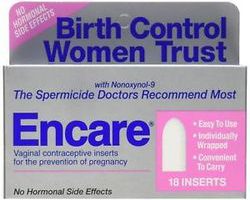Within 3-5 years after the cessation of menstruation, follicles with eggs remain in the ovaries, which explains cases of pregnancy. Therefore, according to the World Health Organization, birth control is recommended for women until menopause and absence of menstruation for 1 year over the age of 50, and for 2 years for women under 50.
The main difficulties in choosing methods of birth control in women over 50 are associated with several specific features. This is, first of all, a large number of concomitant diseases, which are a contraindication to the use of many contraceptives together with possible side effects. Contraceptive options during this period of life should be as gentle as possible, considering all existing health problems.
Hormonal birth control pills
Birth control pills are a method of preventing unwanted pregnancies known for over 50 years. Combined birth control pills contain small amounts of synthetic analogs of two female sex hormones: estrogen and progesterone.
Most modern birth control pills belong to combined oral contraceptives, but even among them, there are several groups. For example, there are monophasic birth control pills. That is, each contraceptive pill contains the same amount of hormones. There are biphasic and triphasic birth control pills when the doses of hormones in different tablets change. The birth control pill is fit for many women.
Oral contraceptives are prescription drugs. It means that only a gynecologist can recommend the pills that are right for you. Only a gynecologist can issue a prescription, so the consultation is required.
Combined oral contraceptives (pills) must be taken at the same time every day. The course lasts for 28 days: for example, some preparations need to be taken for 21 days, and then take a break for 7 days. During this period, menstrual bleeding occurs. Some preparations contain 24 active tablets and 4 placebo tablets. In this case, you do not need to take a break. Each subsequent package is taken after the previous one.
If the intake of the next pill is delayed by less than 12 hours, the birth control reliability does not decrease. If a woman misses a pill for over 12 hours, the use of additional methods of contraception is required for at least the next week.
If a woman over 35 is smoking, combined birth control pills are contraindicated. Talk to your doctor if you smoke and take combination pills.
Use additional protective measures such as condoms or spermicides if you are taking antibiotics, anticonvulsants, or laxatives. Diarrhea or other digestive problems may reduce the contraceptive effect.
The main mechanism of birth control action is the suppression of ovulation. Also, the viscosity of mucus in the cervical canal increases, which makes it difficult for sperm to enter the uterine cavity.
Spermicides fr women over 50
Spermicides are chemicals that destroy sperm cells within a short time (up to 1 minute). They are released as creams, jellies, suppositories, vaginal tablets, foams, and films. All these options are in stock at the pharmacy. Spermicides have a low contraceptive effect, so gynecologists advise combining them with barrier options.
- Pros: Ease of use, protection against some sexually transmitted infections.
- Cons: Low contraceptive effect. Spermicides can negatively affect vaginal flora. Make sure that you are not already pregnant, as, in this case, there is a risk to the fetus.
- Pearl index: 25-30 pregnancies per 100 women per year.

Encare Review
- Active Ingredient: Nonoxynol-9
- Release Form: Vaginal Suppository
- Age: 18 - 55 years
- Average Price: $200 - $220
Vaginal ring – effective for contraception in older women
A special place among intravaginal contraceptives is occupied by a vaginal ring. It is a very flexible and elastic ring. When inserted into the vagina, it “adapts” to the contours of the body as much as possible. At the same time, due to its rounded shape, it is securely fixed in the vagina, taking an optimal position. The ring is easily inserted and removed without difficulty. The shell of the ring consists of a hypoallergenic material – ethylene vinyl acetate (EVA). It is widely used in medical practice for the manufacture of various implants.
Each ring is released for one cycle of use. One cycle consists of 3 weeks of ring use and a week off. Once inserted, the ring should remain in the body for three weeks, then removed on the same day of the week that it was placed.
Hormonal contraceptive injections
How to use: depending on the drug, once every 2-3 months on any day of the cycle. An injection is made into the gluteus muscle or the deltoid muscle of the shoulder.
Pros
- Convenient in use: you need to think about contraception only once every 2-3 months;
- Suitable for women of any age;
- Suitable for women who have either children or not.
Cons
- The injection can be painful, sometimes bruising and bumps appear;
- Side effects are more often expressed: acne, increased hair growth (hirsutism).
Transdermal patch – efficient birth control
How to use. Stick on belly, thigh or shoulder. The patch needs to be changed once a week. After three weeks, take a break for one week.
Pros
- All the advantages that COCs have, but the plaster is more convenient to use;
- Compared to a vaginal ring: no problems with discomfort and vaginal microflora.
Cons
- It gets dirty quickly and does not look aesthetically pleasing;
- Can often unstuck, especially in summer;
- More often needs to be replaced than a ring;
- May cause skin irritation;
- Few options: it is difficult to find an alternative patch if it causes side effects.
Dienogest / Estradiol Review